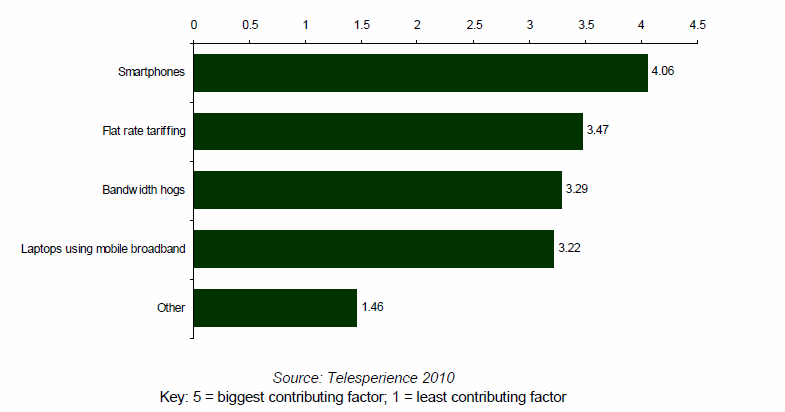According to a panel of worldwide network planning experts the capacity crunch is upon us already.
Earlier this year Cisco said that it expected wireless data traffic to double every year from 2009 through 2014 at a compound annual growth rate (CAGR) of 108%. With some regions and individual countries will see growth far in excess of the global average – creating even greater challenges for wireless operators in those markets.
A new report sponsored by customer experience experts Amdocs “Telesperience – Key strategies for solving the capacity crunch” asked a panel of network planning experts if their networks could currently meet data traffic demands nineteen out of thirty (approximately 63%) said that they were already experiencing congestion.
However, their tendency to report network congestion, and the type of congestion they were experiencing, varied according to the region and size of the operator:
- Asian and American operators who reported congestion said it tended to be in specific geographical areas.
- European operators reporting congestion said it was typically worse at specific times of the day.
- Multi-region and Middle Eastern & African operators were the most likely to believe their networks could meet current demands.
Strangely it was the smallest operators (those with less than 5 million subscribers) that were the most confident their networks could cope with today’s capacity demands, where as larger operators were already experiencing congestion.
So where is the congestion?
Amdocs asked the panel to describe the characteristics of current capacity demand on their networks. Their responses taken in aggregate reveals that data traffic is most commonly being driven by service usage, is intermittent, and varies by time of day. However, further analysis also revealed interesting regional trends:
- Bandwidth hogs were a particular problem for Asian and multi-region operators.
- Planners from the Americas, the Middle East and Africa reported a strong trend in rising traffic across the whole customer base.
- Half of Asian and Middle East and African planners said that congestion was localised to specific macrocells.
Additionally the growth in data on wireless networks worldwide is being driven by a number of factors, such as the availability of smart phones and laptops using mobile broadband; increasing adoption and rollout of data-hungry services (particularly video services); the introduction and growth of machine-to machine traffic; and particularly tariffing such as “all you can eat” or flat-rate data plans.
What is causing the congestion?
Experts were asked to grade the factors they thought were in contributing to capacity demand today, on a scale of 1 to 5, where 5 was the most important factor driving demand and 1 the least important.
Again, there were regional differences in what planners viewed as the chief causes of the capacity crunch:
- American operators were very consistent in their views: all blamed smartphones (5.0) and bandwidth hogs (4.0).
- In Europe there was a wider spread of views, but the two primary culprits were seen as tariffs (4.0) and smart phones (3.6).
- Asian experts saw the main causes as laptops with mobile broadband (4.2), followed by tariffing (3.75) and bandwidth hogs (3.75).
- In the Middle East and Africa planners blamed laptops (3.75) and tariffing (3.25).
To download the full report go here


